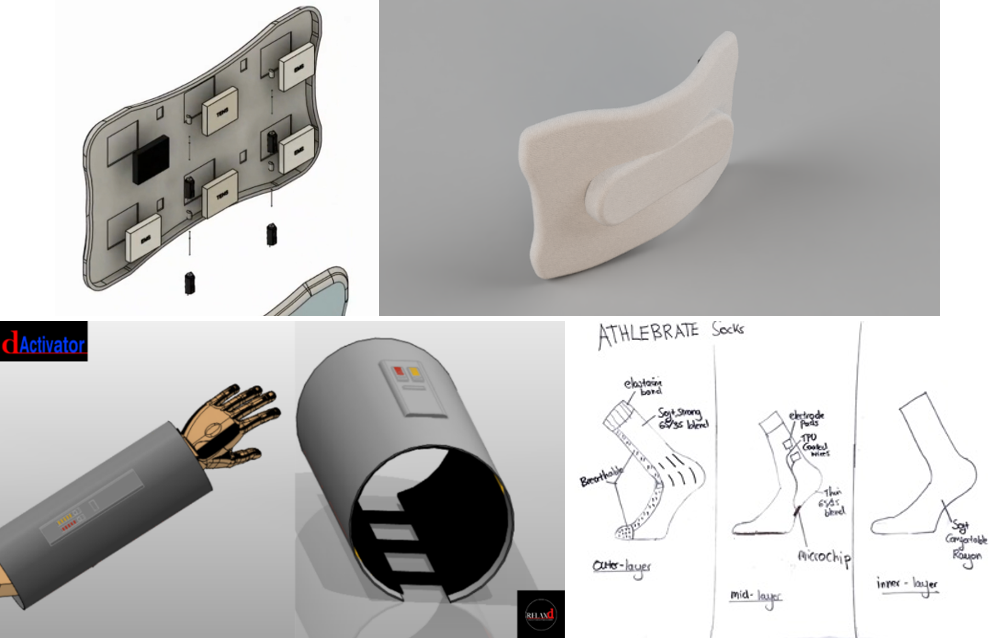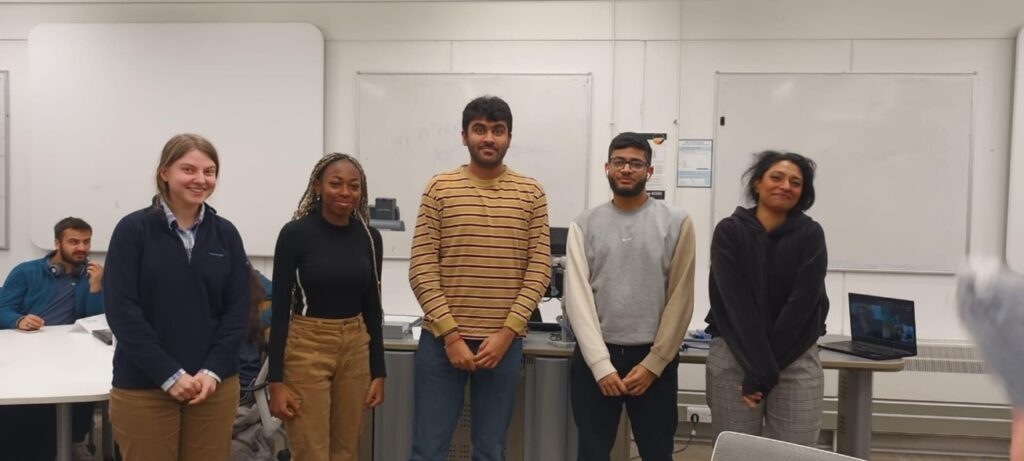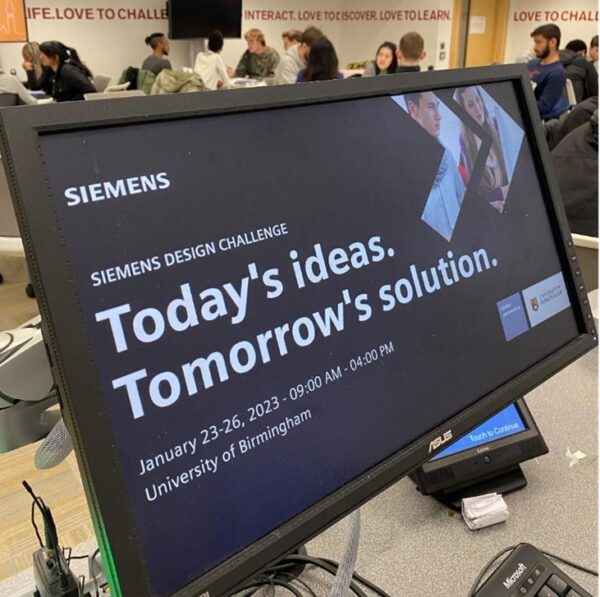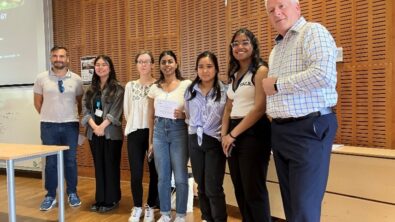Siemens Solid Edge Bootcamp: Empowering future talents by forcing them to go beyond their boundaries

Siemens is always keen to support both students and academic initiatives. That’s why the Mainstream Academic team within Siemens Digital Industries Software hosted this year, for the second time, The Solid Edge Design Bootcamp together with University of Birmingham. Nick Rakkar, Director of EMEA ME Business Development: “Investing in future talents is fundamental, not just for us at Siemens but also for our whole society. We believe in empowering individuals to ensure they reach their fullest potential and feel encouraged to pursue their own dreams. By hosting events like the Solid Edge Design Bootcamp, we inspire creativity and confidence of students.”
The bootcamp took place January 23rd till 26th on The University of Birmingham’s campus and was part of the university’s UoBe Festival, which was at the same time stuffed with career talks and many other activities such as a campus run. Together with Mohamed Abbas, Kerry Brunn and Bob Lee from the university’s B-enterprising team the Siemens team consisting of Susann Kunz, Caroline Guo, Vicky Tong and Paul Abbott were organizing the whole competition including conception, task description, online training, promotion, onsite coordination and judging of the winning teams.
The task the team chose for the competition was inspired by current discussions around healthy living and fitness lifestyle. Caroline Guo from Siemens Global Academic ME: “We came up with the idea to let the students “Design a fitness tool’, because there is a growing consciousness about topics like health, sports & fitness. By choosing this theme we also wanted to contribute some ideas and possible solutions. At the same time, we felt that everyone could relate at some point personally to it.”
Ten teams – Lots of inspiring ideas
In total 49 students, split into 10 teams of 4 to 6 students, participated in the event. The participants came from various academic disciplines like Engineering, but also Liberal Arts, Psychology or Biological Sciences. Teams were strategically matched so that each team would have students from a variety of different faculties. Mohamed Abbas, co-host of the B-enterprising team: “We wanted the contest to be interdisciplinary as we knew the students would benefit from the different perspectives, backgrounds, and skills. In the end this strategy really paid off.” Kathryn Adlam from the winning team agrees: “Our team worked perfectly together, maybe because of the nice mix of different disciplines, so each person had something unique they could contribute which worked pretty well”.
During the 4-day event, guidance was given to students on each stage of the project, walking them through all of the important steps to consider. They were prompted to engage in proper business practices like investigation into their chosen target market and dissection of the problem question.
To familiarize the students with Solid Edge, a workshop was held on the first day to introduce them to the software and its multiple features like simulation, animation, and rendering. This was done to enable students to utilize these features within their pitch, justifications, or marketing. Paul Abbott who conducted the training sums up his thoughts: “One of our requirements was to create the concept in Solid Edge, as this 3D CAD software is the perfect tool to visualize an idea. In that regard it was important that students learned quickly how to work with Solid Edge.”
One of the main tasks of all teams were to define roles and responsibilities making sure decisions were made efficiently and effective due to time limitations and immense workload. “We faced multiple challenges, one was that not being familiar with the software, we needed to use – which applied both to the CAD and the video editing tool,” recalls Harshita Radesh Kumar, student of team 4, and MSc Computer Engineering student at The University of Birmingham. “As all team members had never meet before and were forced to collaborate for the first time, it was also crucial for us to prioritize milestones and team roles based on our different backgrounds and skill sets. During the course of session, I can say with pride, that we have efficiently collaborated and thoroughly enjoyed the learning process.”
To visualize a specific idea the students needed to start working quickly and at the same time be very clear in how to define roles and responsibilities, an even more challenging process if it’s the first time meeting your teammates. Besides needing to find out what talents and skills everyone brings to the table, all the teams needed to get familiar with new tools and methods, such as working with a CAD software in order to visualize a concept, transferring ideas into pictures, defining a plot for a video, and also having to splice it together with a dedicated video editing software. All very challenging tasks that needed to be solved under time pressure.
The whole concept of the bootcamp was carefully balanced as the organizers were fully aware that reasonable results and appealing designs could only be created by considering time and complexity constraints. Susann Kunz, team lead of the camp on Siemens side: “We needed a task that was easy enough for the students to create presentable results within 4 days, while still asking for a design with a certain level of complexity, also to encourage the teams to investigate and use various features in Solid Edge. Last but not least we also wanted them to condense their concept in a short video, again to force them to also add a story to their envisioned product. By illustrating and commenting a concept with a video everything becomes much clearer, also for the audience.”
From defining a market to promoting to a target audience
All student teams did some basic research about the market they were attempting to infiltrate, with the goal to find an appropriate gap where their ideas could stand out. In order to address a target market, they had to answer the following questions: 1: ‘What part of the body are we designing the fitness tool for?’ and 2. ‘Who would be the ideal customer to use our product?’ Four out of the ten teams chose to declare back pains to be the most prevalent issue with reasons saying, “everyone’s backs hurt, we just sit around, no matter how old or young you are, no one can get away from it.”, recalls Ria Cherian, MSc Marketing Student at Birmingham University.

Other teams targeted calves or thigh muscles with specific sports in mind, the most popular example of common injuries coming from sports like football. One team, playing to their strengths within their respective electrical engineering and biotechnology degrees, took the unique approach of designing a wearable wristband which they presented with research supporting its potential benefits to users.
All teams additionally needed to come up with a marketing strategy to complement their design. Most of them planned to use Instagram for advertising and collaborations with fitness influencers to promote their product to a desired audience. Another factor some teams considered was how to scale up after market entry more quickly, for instance by rather focusing on fitness studios instead of individuals as these are bigger and have somehow more expertise to handle larger products.

Deciding for the winning team
At the end of the event, teams were asked to create a video pitching their solution along with their market strategy to a jury. The panel consisted of Ana Madan, University of Birmingham Elevate Incubator program manager, Nicola Gittins, Deputy Director of Student Entrepreneurship and Enterprise, joined by Siemens judges Susann Kunz, Caroline Guo, Paul Abbott and Vicky Tong from Siemens, Mainstream Engineering.
Based on the product pitch, the judges evaluated the prototypes based on different criteria, such as the product idea itself, aesthetics, usability, material selection and ergonomics, but also how the prototype was introduced, manufactured, and promoted. Furthermore, as the challenge was about designing the product in Solid Edge, the corresponding CAD files were examined to check if additional features like rendering, simulation, and animations have been used. Applying any of these granted bonus points. Vicky Tong from the judges panel: ”We were looking at how well ideas were executed and how clear a team’s vision was for their product. Being able to apply different methods to a model makes it also easier to understand and more appealing which automatically also leads to a clearer vision how to manufacture a digital prototype.”
Introducing the winning project: the sports bench Spine 2.0
In the end Team 7 – consisting of the students Auyanerudo Rukuni, Muhammed Nurgat, Ria Mary Cherian, Siddhanth Sharma, and Kathryn Adlam – were rewarded as winners.
Their sports bench “Spine 2.0” was designed in two parts, a cushioned one, and one with rollers. The concept envisioned that the user could sit on the cushioned section and lay their back on the roller section, allowing them to slide on it. On the dynamic back stretching device, a user would lie across a series of foam rollers which aided the curve of the back ‘comfortably and safely’. The design intended to connect different rolls to a series of brackets, which would be attached to a metal frame to fix the device into the desired shape once assembled. The frame could also have different shapes and for better transportation and storage the team envisioned that the roller section could also be folded under the cushioned section by removing the frame.

Student Ria Cherian remembers how they came up with the idea: “We tried out a few different product ideas but scrapped them as they weren’t practical or marketable or had too niche of an audience. We then decided to ask some of our gym-going friends what they thought were lacking in a normal gym, and we realized that stretching equipment wasn’t common and decided to research more about that. We decided to design a more heavy-duty option which was suitable for gyms and could be used by multiple people a day.”
“The winning team executed their idea with a beautiful balance between creativity and innovation while still considering a practical and realistic approach”, justifies Susann Kunz, jury member, and co-initiator of the bootcamp the decision of the jury. “They confidently conveyed their idea and planned also it’s execution. The video they produced showed very well the complexity of their designed Solid Edge model as well transported clearly how they would promote it to a target market.”

Besides the best concept in product design, team 7 also came up with an innovative marketing plan: They suggested to promote their sports bench under Birmingham canal bridges, so people passing by could test the flexibility of their back and simultaneously get to know the new product. Mohamed Abbas, B-enterprising, “This reflects just one of the unusual approaches that were seen from other teams as well during the whole competition. It was even more astonishing as this was done in such a short time frame.”

“Prior to the Siemens design challenge, I had never used Solid Edge before”, comments Muhammed Nurgat, student, and member of the winning team. “When I was first introduced to the software, I was intrigued by the synchronous technology and how intuitive it made 3D CAD modelling. At first, this new direct modelling method seemed very different to other CAD software, in the end it allowed us to design and edit our prototype much quicker and more efficient.”

Four days of hard and intense work that paid off in the end
Siddhanth Sharma: “I decided to participate in the Siemens Bootcamp challenge because I felt it was an amazing opportunity to try something new and unique. Furthermore, when the organizers mentioned, we will be using Solid Edge to create a prototype of a fitness product, I felt this would be quite intriguing as I had not done something like this before. Therefore, I felt it would be a delightful experience. Additionally, as Siemens is a large and reputable organization, it seemed logical to participate in this contest because it would be beneficial for my overall growth and allow me to put my skills to the test.”
“In the end all teams did great, of course with a broad range of results”, sums Susann Kunz up. “Besides the impressing output, the teams also grew together on a personal level, and that was what we also had aimed for with this competition, achieving great results together and seeing what a difference it makes.”
Mohamed Abbas adds: “All teams designed great products with lots of creativity and passion to address concrete health issues. During the challenge, they were able to gain experience not only in 3D CAD modeling software and concepts but also in marketing, business models and pitching, and even more important interpersonal skills such as teamwork. All in all, we can consider this second bootcamp with Siemens a success, that should be repeated.”

Victoria Tong and Caroline Guo


